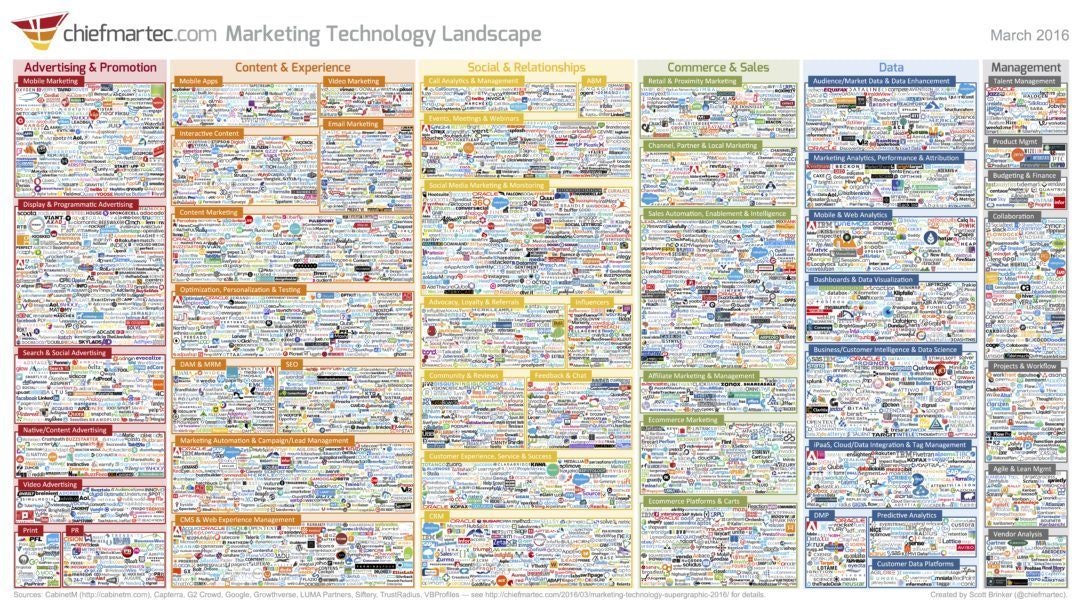Let’s just get this out of the way.
There are so many channels to communicate to our ideal audience. Everyone, no matter what they’re purchasing, has so many choices of what to buy. Everyone has so many ways to be talked to (or at): TV, print, billboards, websites, Snapchat, Instagram, Facebook, Facebook Live, YouTube, Pandora, Spotify, Hulu, even in-flight commercials. And our data is everywhere. If you’re not personalizing or hyper-targeting based on demographic and sociographic information, you’re just lazy.
And just for good measure: content is still and will always be king. Oh, and everyone has a cell phone and uses it incessantly.
Being relevant is hard. Especially on the internet where everyone has the attention span of a goldfish (ok, not really, but you get the point).
Whew. Glad we got that out of the way.
Now, let’s talk about three key areas we think will continue to be especially big in 2017.
User Experiences
There has never been a time in which we have had more information at our fingertips to help make decisions. So, we as users have pivoted our desires from “information must be in depth and available” to “information must be in depth, available, but easily digestible, and interactive.”
Users are asking for us to help them narrow down their choices. At Element Three, we’ve been creating interactive tools to do just that for several of our clients.
- Airstream, Choose Your Own: We worked with an illustrator to create beautiful imagery through this tool. Users are asked a series of questions and, based on their answers, are given the models that best suit their lifestyle.
- Boston Whaler, Build Your Own: Across 6 boat families and 31 boat models, there are thousands of combinations of Boston Whaler boats you can purchase. This tool lets you customize everything – from color, to engine type, to accessories – and gives you the price point.
- BraunAbility, Help Me Buy: BraunAbility manufactures wheelchair accessible vehicles and needed to be able to help users navigate the buying process. That process includes introductory research, understanding the differences between vehicle types, and understanding financing options.
Creating these types of experiences is in line with what modern SEO looks like. The language used is the natural language of the users. It will gain links from reputable sites. If we did our job right, users will navigate throughout these tools, increasing web metrics like time on page and pages seen and decreasing bounce rate. And as we wrote last year, the basics aren’t forgotten. Each of these experiences has a custom meta description to help users know what’s behind the search result. All of these are signals to Google that this content is high quality.
Digital Experiences
Your user experience didn’t start and certainly doesn’t end at a cool website presence. It probably started with a paid advertisement – whether it was display, search, Facebook, Instagram, Pinterest, YouTube, or LinkedIn. And after the user completes the “journey,” you’re just getting started. Your campaign probably (read: should) continues with lead nurturing emails, retargeting, webinars, offers, and smart content on your website to help you move the user to closed-won business.
Because marketers are no longer expected to just deliver and execute the campaign. They’re expected to deliver tangible, business-focused results – i.e., customers.
There will continue to be a need to do multi-channel reporting across multiple platforms. What channels are most profitable? Where should you be focusing your marketing dollars: advertising, emails, content creation? No channel is working in a silo – and there is a greater responsibility on marketers to be able to measure each channel individually and as a part of the collective effort.
And no business is the same in their technology choices. Which leads me to my next trend to watch out for.
Marketing Technology
Every marketer loves looking at Scott Brinker’s Marketing Technology Landscape graphic and thinking “wow, look at all the new things we have to know.” And it’s true – to a point.
You can’t always choose which software your company has adopted, whether it’s an enterprise solution, a proprietary platform, or something from 1998. As much as you’d like to get your department to switch to something different, changing platforms, no matter the benefits, can be cost prohibitive and may take years to fully implement. And to continue to keep your competitive edge and deliver the best results for your organization, you have to stay (relatively) up to date on new platforms.
One platform might serve a great purpose when it comes to email, lead nurturing, and lead scoring, but lack functionality when it comes to landing pages. All of a sudden you have two different platforms that need to be able to talk to each other.
2017 will be the year marketing technologist becomes a commonplace job title. You need someone at the helm to understand each platform in depth – and how they communicate information between each other.
Closing
Overall, I think that 2017 will be the year that brands make significant movements towards a closed loop ecosystem of information that best serves the user. That might seem like a generic statement, but the whole goal of digital marketing is to provide the best user experience possible. When all the parts of the digital landscape are working well together – UX, the digital journey, and marketing technology – it’s not just best for your digital marketing team. It’s best for the customer, too.






